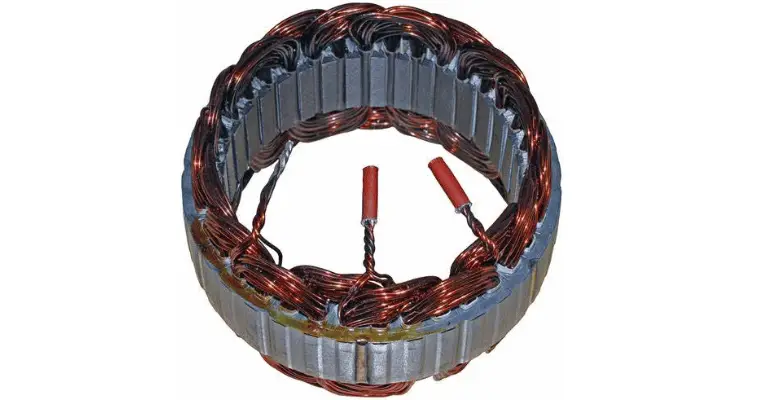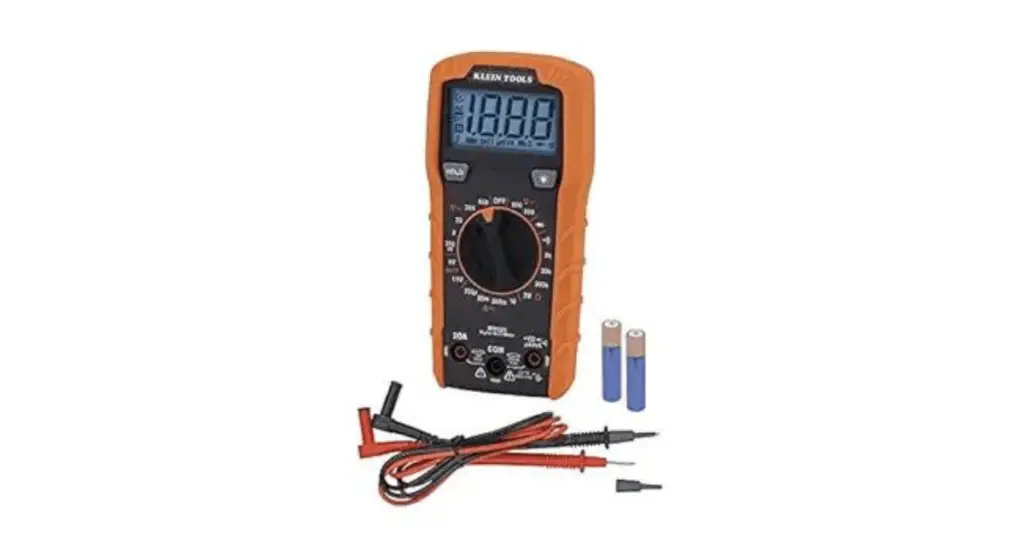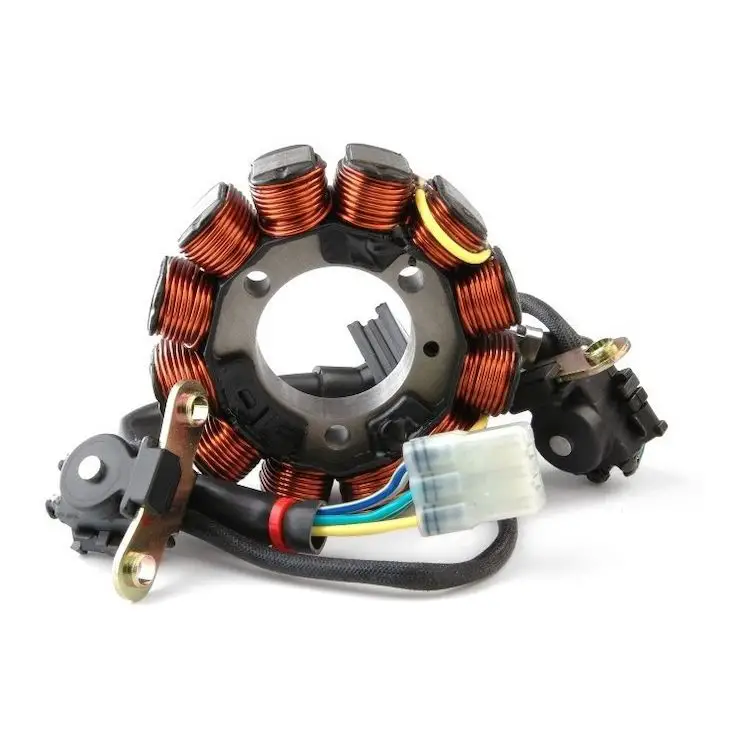Hey there, fellow rider! Let’s chat about that unsung hero of your motorcycle’s electrical system: the stator. It’s like the silent DJ at a party, making sure the music (or in this case, power) keeps going. But what happens when DJ Stator has an off day? Let’s break it down. Moving forward, I’ll give you a brief intro into the function of a stator, how to tell if your stator is bad, and then what to do about it. Alright great! Let’s keep moving.
So, What Does The Stator Do On A Motorcycle?
Before we delve into the symptoms of a bad motorcycle stator, let’s first understand what a stator is and what it does. The stator is a stationary part of the alternator and plays a crucial role in generating AC electrical power.

This power is then converted into DC power by the regulator/rectifier, which charges the battery and powers the electrical components of the motorcycle, including the ignition system and headlights. Without a functional stator, your motorcycle’s electrical system would quickly drain the battery, leading to a range of issues.
How Do Modern Electronics Affect Today’s Motorcycle Stators
With motorcycles packing more tech than ever—LED lights, digital displays, and electronic rider aids—the stator, your bike’s power DJ, is working overtime. These features, while cool, put extra demand on your motorcycle’s electrical system, spotlighting the stator’s crucial role in keeping everything powered up.
How Have Stators or Generators Evolved Over Time
Back in the day, motorcycle stators had a simpler job: power the basics like ignition and lights. But as bikes got smarter, stators had to level up. They’re now designed to handle more load, powering everything from fuel injection systems to ABS, without breaking a sweat.
Modern stators are beefed up with better materials and smarter designs to efficiently manage the extra workload. They’ve got improved windings and insulation to withstand higher temperatures and keep your ride’s soundtrack playing, no matter how tech-loaded your bike is.
And, Where Is The Stator On A Motorcycle?
The stator is typically located on the left side of the engine, usually under a cover. It’s a ring-shaped component with numerous coils of wire wound around a metal core. These coils generate electrical power when the motorcycle’s rotor (which is attached to the crankshaft) spins around them.
What Are The Symptoms Of A Bad Stator On A Motorcycle?

Now that we understand the role of a stator let’s spot the signs of a bad stator. Here are some common symptoms to look out for:
- Difficulty Starting: If your motorcycle is struggling to start, it might be due to a faulty stator. Since the stator is responsible for generating power for the spark plugs, a malfunctioning stator may produce weak or no sparks, making it hard for the engine to start.
- Poor Performance at High RPMs: If your motorcycle runs fine at lower rpms but starts to Falter at higher rpms, it could be a sign that the high-speed coil in the stator is failing.
- Frequent Misfires: An irregular or insufficient supply of power to the spark plugs Can lead to misfires. If you notice your Motorcycle misfiring occasionally (or constantly), it’s a clear indication of a bad stator.
- Dim Headlights: A malfunctioning stator can result in dim headlights. Since the stator powers the electrical accessories of the motorcycle, its failure can result in the headlights appearing dimmer than usual.
- Battery Drains Quickly: If your Battery is draining more quickly than usual, it might be because the stator isn’t supplying enough power to keep it charged.
- Dead Gauges: If your gauges are not illuminating or providing readings, it might be Due to a failing stator.
How To Check If Your Stator Is Working (Diagnostic Procedure)
If you’re experiencing any of the symptoms listed above, it’s time to check if your stator is functioning correctly. Here’s a step-by-step diagnostic procedure:
- Visual Inspection: Start by visually inspecting the stator. Look for any signs of physical damage, such as burnt wires or melted insulation. If you see any of these signs, your stator likely needs to be replaced.
- Voltage Test: You can also perform a voltage test to check the stator’s performance. Connect a voltmeter to the battery and observe the voltage while the engine is running at various RPMs. If the voltage doesn’t increase as the RPMs rise, it could be a sign that the stator isn’t generating enough power.
- Resistance Test: Another way to check the stator is by performing a resistance test using a multimeter. This test measures the resistance between the stator’s wires and can indicate whether the stator is shorted or open.
Related: How To Test A Stator On A Motorcycle (Like A Pro) 101
Steps To Take When Your Stator Is Bad?

If you’ve determined that your stator is indeed bad, here are the steps you need to take:
- Seek Professional Help: If you’re not comfortable with motorcycle repairs or don’t have the necessary tools, it’s best to take your motorcycle to a professional mechanic. They can determine whether your stator needs to be repaired or replaced.
- Repair or Replace: Depending on the severity of the damage, your stator may need to be repaired or replaced. If the stator is burnt or physically damaged, it will likely need to be replaced. However, if the stator is producing a weak output, it might be repairable.
Maintenance Tips to Prolong The Life of Your Stator
Keeping the stator in top shape is key to ensuring your motorcycle’s electronics run smoothly. Here’s how you can stay ahead:
- Regular Battery Checks: A healthy battery means a happy stator. Keep tabs on your battery’s charge and health to prevent unnecessary strain on your stator.
- Inspect Wiring and Connections: Look out for wear or damage in the wiring. A loose or damaged wire can compromise your stator’s performance.
- Mind the Load: Adding aftermarket gadgets? Ensure they don’t overload your bike’s electrical system. Overloading can overwork your stator.
- Professional Check-ups: Sometimes, a pro’s eye can catch what you might miss. A periodic inspection by a mechanic can keep stator troubles at bay.
By following these tips, you can help extend the life of your stator and keep your motorcycle’s electrical system running like a well-oiled machine.
Can You Replace A Stator Yourself?
Replacing a stator can be a complex task and requires a certain level of mechanical knowledge and the right tools. If you’re confident in your abilities and have a good understanding of your motorcycle’s electrical system, you can replace the stator yourself. However, if you’re unsure, it’s always best to leave it to the professionals to avoid causing further damage.
How Much Does It Cost To Replace?
The cost of replacing a stator can vary depending on the make and model of your motorcycle and whether you do the work yourself or hire a professional. On average, you can expect to pay between $200 and $500 for a new stator and around $100 to $200 for professional installation.
Recap of Main Points
The stator plays a crucial role in your motorcycle’s electrical system, generating power for the battery and various electrical components. Symptoms of a bad stator can include difficulty starting, frequent misfires, dim headlights, and a quickly draining battery. Regular maintenance and avoiding power overloads can help prevent stator failure. If your stator is bad, it’s important to either repair or replace it promptly to prevent further damage to your motorcycle’s electrical system.